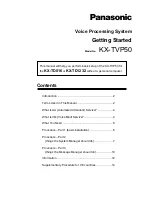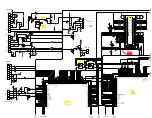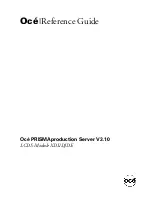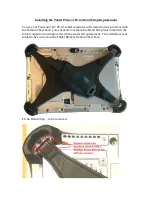
43
STEPS FOR MAINTAINING PROPER
TIRE PRESSURE
1.
Locate the recommended tire pressure on the
vehicle’s tire information placard, certification label,
or in the owner’s manual.
2. Record the tire pressure of all tires.
3. If the tire pressure is too high in any of the tires,
slowly release air by gently pressing on the tire valve
stem with the edge of your tire gauge until you get to
the correct pressure.
4. If the tire pressure is too low, note the difference
between the measured tire pressure and the correct
tire pressure. These “missing” pounds of pressure
are what you will need to add.
5. At a service station, add the missing pounds of air
pressure to each tire that is under inflated.
6. Check all the tires to make sure they have the same
air pressure (except in cases in which the front and
rear tires are supposed to have different amounts of
pressure).
If you have been driving your vehicle and think that a
tire is under-inflated, fill it to the recommended cold
inflation pressure indicated on your vehicle’s tire
information placard or certification label. While your
tire may still be slightly under-inflated due to the extra
pounds of pressure in the warm tire, it is safer to drive
with air pressure that is slightly lower than the vehicle
manufacturer’s recommended cold inflation pressure
than to drive with a significantly under-inflated tire.
Since this is a temporary fix, don’t forget to recheck and
adjust the tire’s pressure when you can obtain a cold
reading.
TIRE SIZE
To maintain tire safety, purchase new tires that are the
same size as the vehicle’s original tires or another size
recommended by the manufacturer. Look at the tire
information placard, the owner’s manual, or the sidewall
of the tire you are replacing to find this information. If
you have any doubt about the correct size to choose,
consult with the tire dealer.
TIRE TREAD
The tire tread provides the gripping action and traction
that prevent your vehicle from slipping or sliding,
especially when the road is wet or icy. In general, tires
are not safe and should be replaced when the tread
is worn down to 1/16 of an inch. Tires have built-in
treadwear indicators that let you know when it is time to
replace your tires. These indicators are raised sections
spaced intermittently in the bottom of the tread
grooves. When they appear “even” with the outside
of the tread, it is time to replace your tires. Another
method for checking tread depth is to place a penny in
the tread with Lincoln’s head upside down and facing
you. If you can see the top of Lincoln’s head, you are
ready for new tires.
TIRE BALANCE AND WHEEL ALIGNMENT
To avoid vibration or shaking of the vehicle when a
tire rotates, the tire must be properly balanced. This
balance is achieved by positioning weights on the wheel
to counterbalance heavy spots on the wheel-and-tire
assembly. A wheel alignment adjusts the angles of the
wheels so that they are positioned correctly relative to
the vehicle’s frame. This adjustment maximizes the life
of your tires and prevents your car from veering to the
right or left when driving on a straight, level road. These
adjustments require special equipment and should be
performed by a qualified technician.
Содержание 2020 TOFINO
Страница 1: ...1 OWNER S MANUAL 2020 TOFINO Ram ProMaster 1500 ...
Страница 6: ...6 ...
Страница 11: ...5 ...
Страница 34: ...28 DC LOAD CENTER BOARD SPYDER CONTROLS ...
Страница 53: ...47 MAINTENANCE LOG MODEL YEAR VIN DATE PURCHASED DATE WORK PERFORMED BY MILEAGE NOTES ...
Страница 54: ...48 DATE WORK PERFORMED BY MILEAGE NOTES ...
Страница 55: ...49 DATE WORK PERFORMED BY MILEAGE NOTES ...
Страница 56: ...50 302 PORTAGE AVENUE SASKATOON SK CANADA S7J 4C6 TEL 800 364 0189 FAX 800 934 7085 WWW PLEASUREWAY COM ...







































